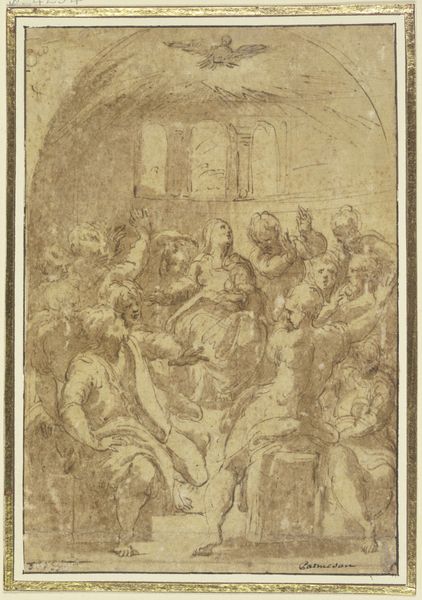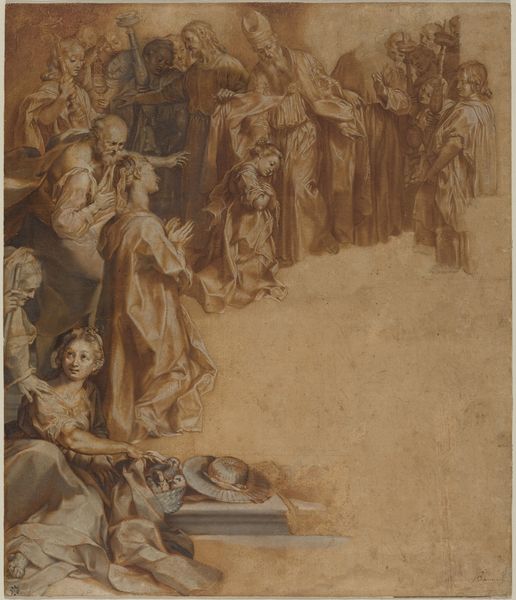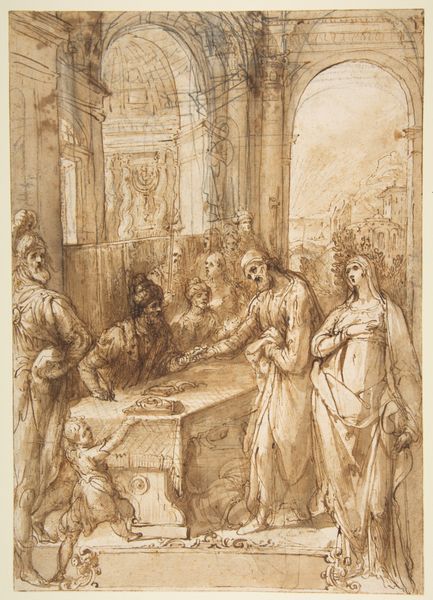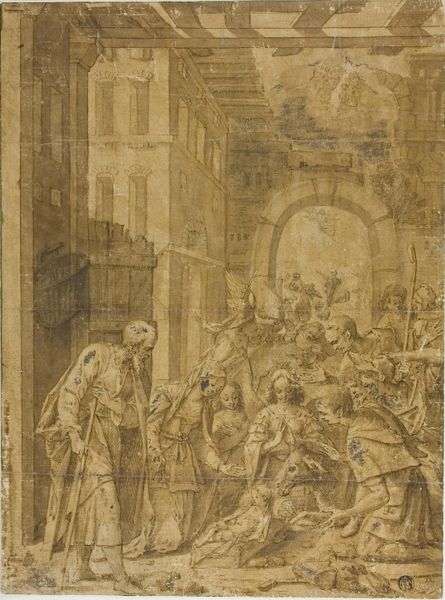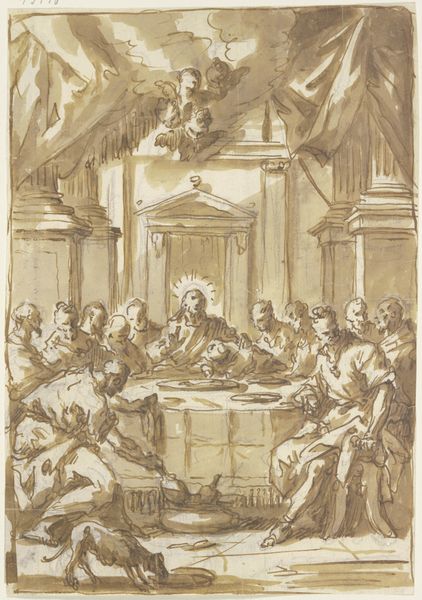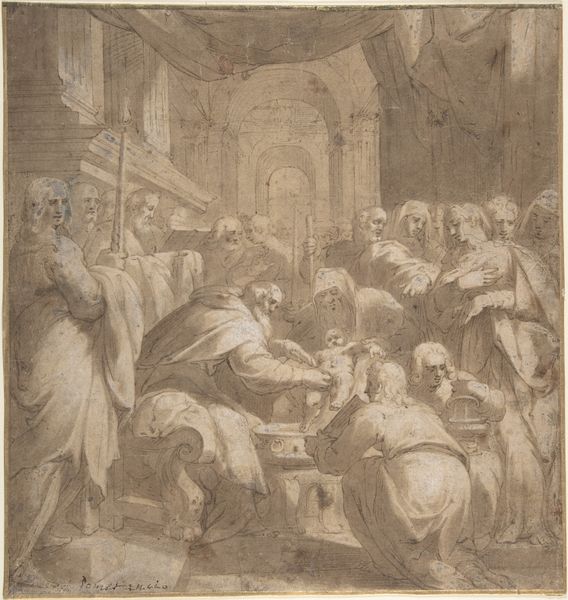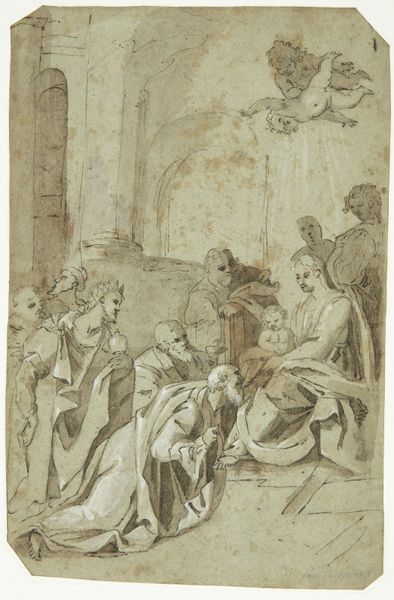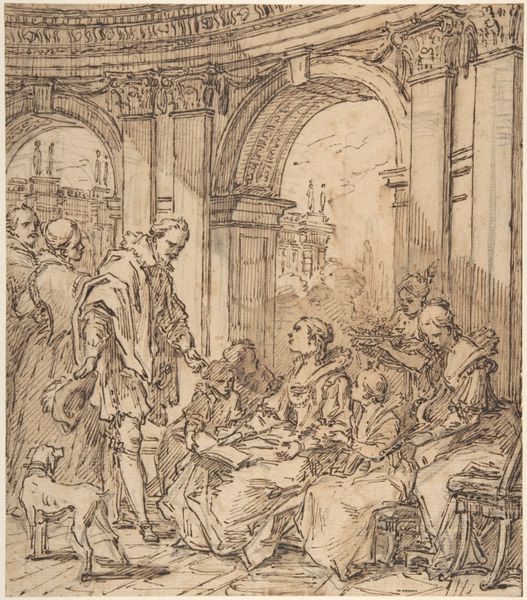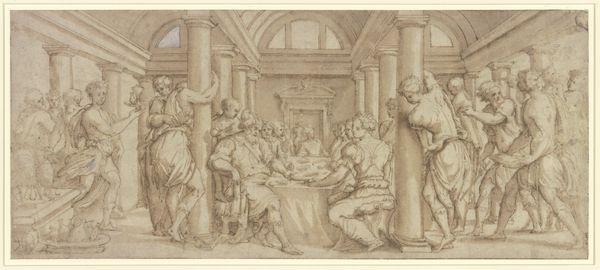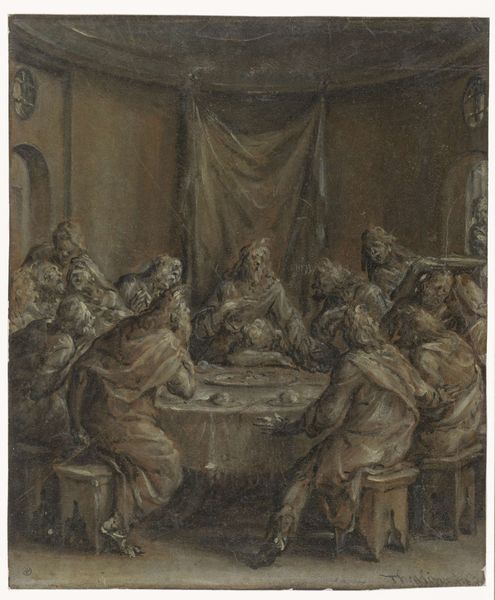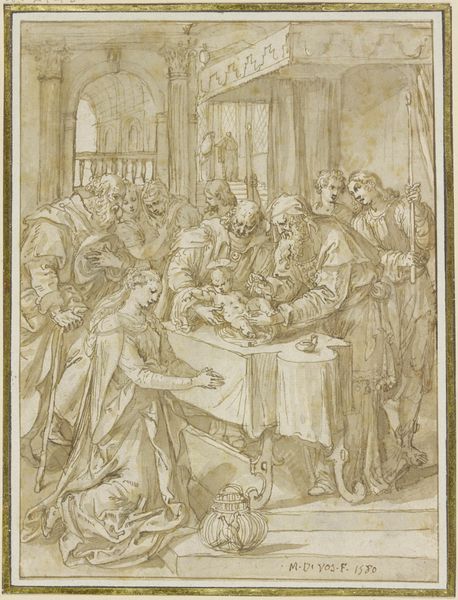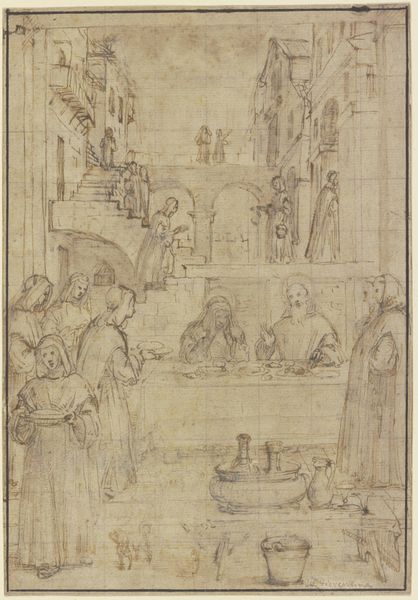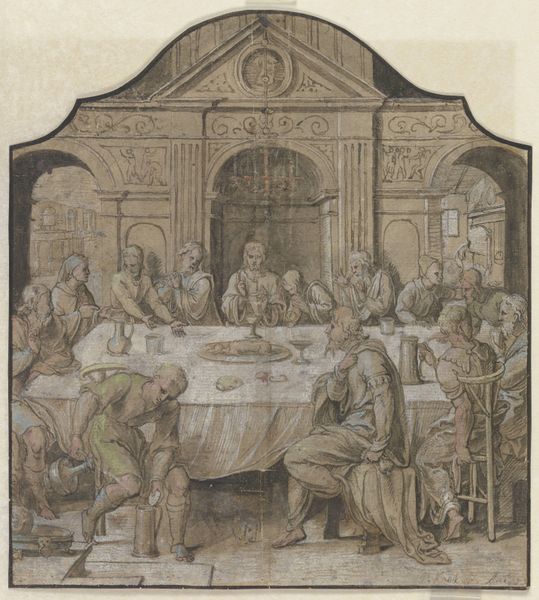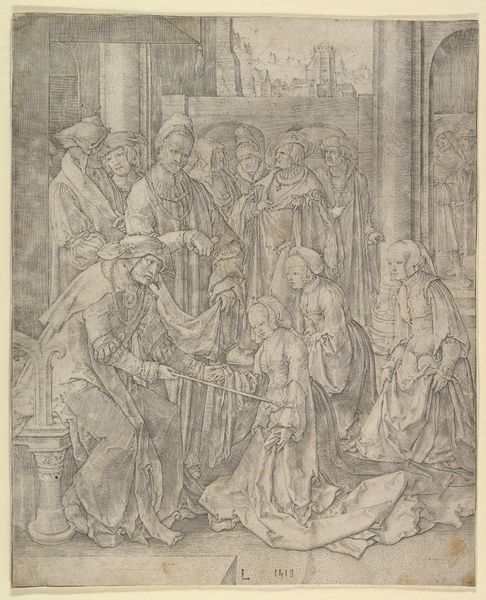
Study for Christ and the Magdalene in the House of Simon 1564 - 1572
drawing, tempera, paper, ink, chalk, pen, charcoal, black-chalk
drawing
allegory
tempera
charcoal drawing
figuration
paper
11_renaissance
ink
chalk
pen
charcoal
history-painting
italian-renaissance
black-chalk
Dimensions: 265 × 173 mm
Copyright: Public Domain
Curator: So, we’re looking at a drawing titled "Study for Christ and the Magdalene in the House of Simon," made between 1564 and 1572 by someone in the circle of Giovanni Battista Bertani. The medium is varied: pen, ink, tempera, chalk, and charcoal on paper. The drawing itself is rendered in sepia tones, lending a certain gravity to the scene. What strikes you initially? Editor: I'm drawn to how preliminary it feels, a sketch capturing a specific moment. What interests me is, well, where does such a study fit into the wider material culture and artistic production of the time? Curator: A very astute observation! As a study, its value isn't just aesthetic, but resides in the labor and resources invested in its creation and its role in a larger production. The combination of readily available materials like charcoal with more specialized ones like tempera invites a closer look at workshop practices. How does the artist’s choice of materials and techniques shape your understanding of the social and economic realities of art making at that time? Editor: That’s interesting, thinking about value beyond the purely aesthetic. I guess the deliberate layering of materials, the pen lines over charcoal, speaks to a calculated process. Was the value then less about the 'artwork' itself, and more about a display of skill, material access, or studio output? Curator: Precisely. Think about the patronage system: a drawing like this might be shown to potential clients, demonstrating the artist's skill and the availability of specific materials. The combination of these materials suggests a negotiation between cost, desired effect, and available resources. Consider the paper itself - what do you know of its production? Editor: Not much! I imagine that quality was pretty important for longevity, impacting how the pigments would bind, and whether or not it could stand repeated use if it was part of the instructional process within a studio. Curator: Exactly. Thinking about it materially allows us to consider the drawing as an object deeply embedded in social and economic networks, not just an isolated artistic creation. Understanding the materials helps us connect to the world of the Renaissance workshop and the marketplace for art. It highlights not only skill and intention but also labour and access. Editor: Thanks, that really puts a new perspective on it for me!
Comments
No comments
Be the first to comment and join the conversation on the ultimate creative platform.
